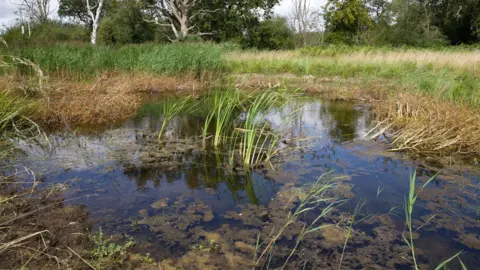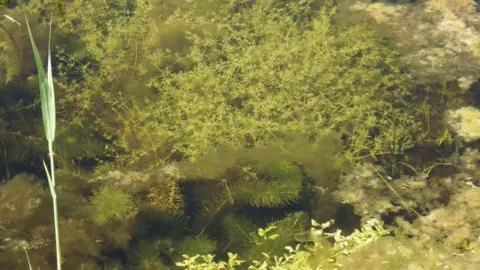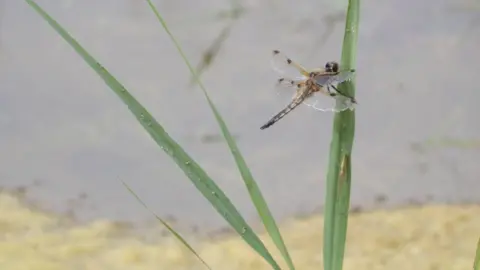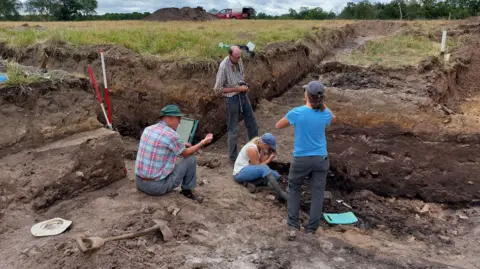Dormant seeds from Ice Age pond project germinate
 Jimmy King/NWT
Jimmy King/NWTRare freshwater wildlife has made comeback following a project to rediscover and restore ancient Ice Age ponds, a charity said.
Norfolk Wildlife Trust (NWT) and its partners were behind the project to find the ponds or "pingos" which originated through natural glacial processes more than 10,000 years ago.
NWT said dormant seeds preserved in sediment layers in the Brecks had germinated, bringing back a variety of aquatic plants, including rare fen pondweed.
"We think we are seeing one of the world's most successful ecological restoration techniques unfold and reveal its true potential," said University College London (UCL) professors Helene Burningham and Carl Sayer.
"If you can find and expose the old store of seeds of lost wetlands, all sorts of rare plants species can recover and with the plants comes the habitat for a vast array of other creatures," the pair added.
NWT said nine of the excavated ghost pingos now qualified for priority habitat status due to their ecological value.
 Tim Holt-Wilson/NWT
Tim Holt-Wilson/NWTThe charity worked with UCL, Norfolk Geodiversity Partnership and the Norfolk Ponds Project to locate and re-excavate buried pingo ponds hidden beneath farmland.
Using advanced mapping techniques, the team found 15 buried pingos - 11 on NWT's Watering Farm, near Watton, Norfolk, adjacent to Thompson Common nature reserve, and four on privately-owned sites nearby.
More than 90 wetland plant species have emerged from the preserved dormant seeds, while the ponds have become havens for wildlife, hosting 50 species of water beetles - 15 of conservation concern - as well as common frogs, toads, great crested newts and grass snakes.
 NWT
NWTNWT hoped the project had created a "blueprint" for further pingo restoration.
"Every pingo we uncover here boosts the size and quality of NWT Thompson Common nature reserve, providing bigger, better and more joined up habitat," said Jon Preston, nature conservation manager for NWT.
Tim Holt-Wilson of the Norfolk Geodiversity Partnership, said: "A star find was a log with possible tool marks which we dated to 1350 BC using radiocarbon analysis – that means the early middle Bronze Age.
"Deeper down, some of the patterns in the chalky pond basement layers must have been made by ground ice 12,000 years ago, at the end of the last Ice Age."
The project was part of the Brecks Fen Edge and Rivers Landscape Partnership scheme, funded by the National Lottery Heritage Fund.
 Carl Sayers/NWT
Carl Sayers/NWTFollow Norfolk news on BBC Sounds, Facebook, Instagram and X.
